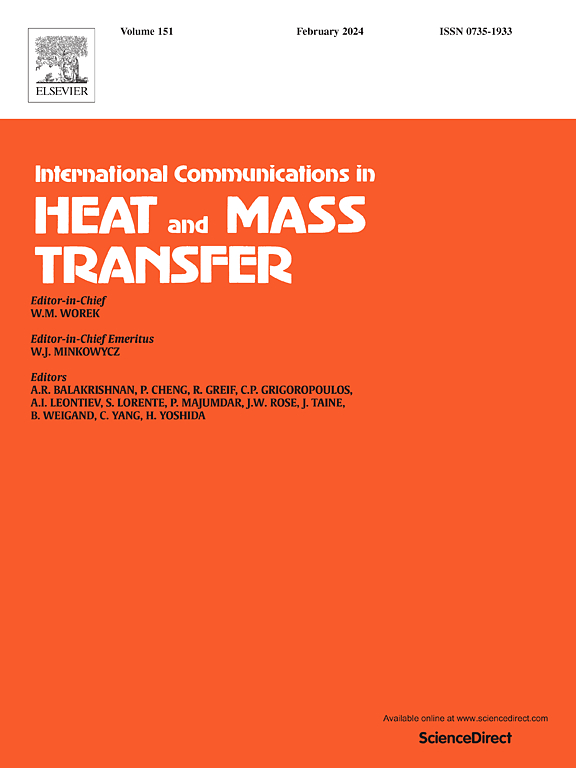Harnessing transfer learning for achieving superior thermal-hydraulic performance in heterogeneous pin-fin arrays
IF 6.4
2区 工程技术
Q1 MECHANICS
International Communications in Heat and Mass Transfer
Pub Date : 2025-04-27
DOI:10.1016/j.icheatmasstransfer.2025.108968
引用次数: 0
Abstract
In gas turbines, achieving greater fuel efficiency and increased thrust demands higher operating temperatures, which require advanced cooling mechanisms to prevent thermo-mechanical failures. Pin-fin arrays, traditionally designed with uniform circular pin-fins, have played a crucial role in cooling the trailing edge of turbine blades. However, the conventional approach of uniform pin-fin size and spacing fails to fully capitalize on the complex and evolving flow field within the domain, potentially limiting the effectiveness of the cooling system. In this paper, a transfer learning framework, which combines Bayesian optimization with computational fluid dynamics, is used to optimize three complex heterogeneous pin-fin array configurations on a large-scale domain which would otherwise be computationally expensive. This framework leverages a small-scale domain which preserves the flow-thermal behavior, allowing for high-throughput evaluations on a high-dimensional input design space, creating robust surrogate models and enabling efficient optimization. The small-scale optimized design is then transferred to the large-scale domain as a starting point for further optimization, reducing computational costs by up to 60 %. It is found that increasing the heterogeneity of pin-fin arrays leads to increases in heat transfer up to 6.8 % and reductions in pressure drop up to 76.7 % when compared to a traditional circular pin-fin array.
利用迁移学习实现非均质翅片阵列优越的热工性能
在燃气轮机中,要实现更高的燃油效率和更大的推力,就需要更高的工作温度,这就需要先进的冷却机制来防止热机械故障。传统的均匀圆形尾鳍阵列在冷却涡轮叶片后缘方面起着至关重要的作用。然而,传统的均匀翅片尺寸和间距的方法不能充分利用复杂和不断变化的流场,这可能会限制冷却系统的有效性。本文采用贝叶斯优化与计算流体力学相结合的迁移学习框架,在大尺度域上对三种复杂的异质鳍阵列构型进行优化,否则计算成本会很高。该框架利用了保留流动热行为的小规模域,允许在高维输入设计空间上进行高通量评估,创建健壮的代理模型并实现高效优化。然后将小规模优化设计转移到大规模领域,作为进一步优化的起点,将计算成本降低高达60%。研究发现,与传统的圆形管肋阵列相比,增加管肋阵列的非均匀性可使传热增加6.8%,压降降低76.7%。
本文章由计算机程序翻译,如有差异,请以英文原文为准。
求助全文
约1分钟内获得全文
求助全文
来源期刊
CiteScore
11.00
自引率
10.00%
发文量
648
审稿时长
32 days
期刊介绍:
International Communications in Heat and Mass Transfer serves as a world forum for the rapid dissemination of new ideas, new measurement techniques, preliminary findings of ongoing investigations, discussions, and criticisms in the field of heat and mass transfer. Two types of manuscript will be considered for publication: communications (short reports of new work or discussions of work which has already been published) and summaries (abstracts of reports, theses or manuscripts which are too long for publication in full). Together with its companion publication, International Journal of Heat and Mass Transfer, with which it shares the same Board of Editors, this journal is read by research workers and engineers throughout the world.

 求助内容:
求助内容: 应助结果提醒方式:
应助结果提醒方式:


